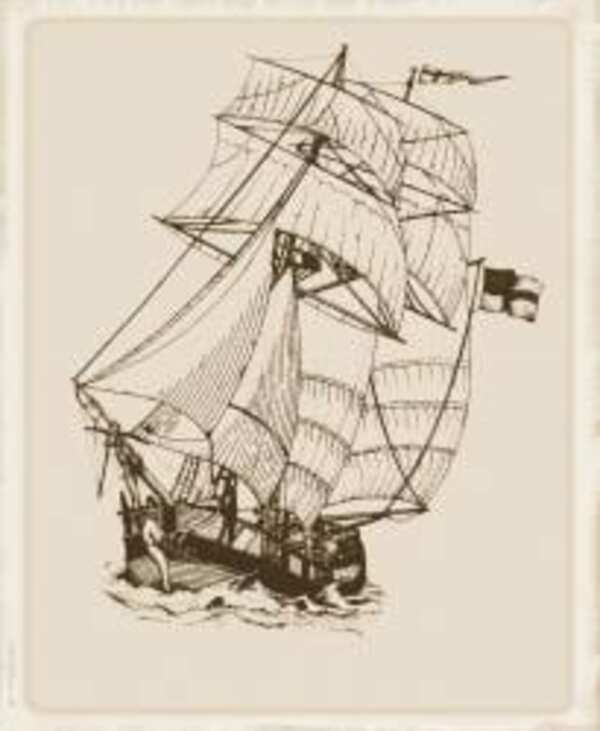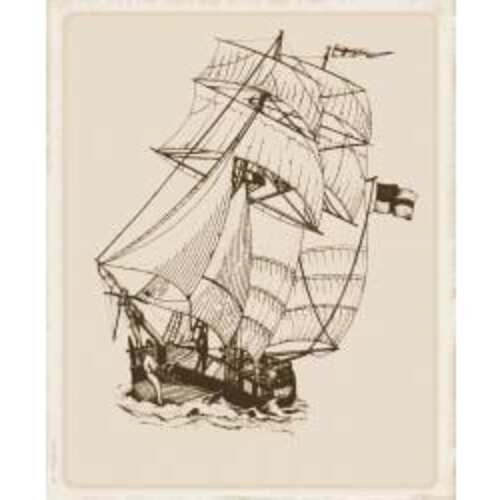
Source: Link
WORSLEY, MILLER, naval officer; b. 8 July 1791 in Gatcombe, England, fifth of seven sons of the Reverend Henry Worsley and Mary Dickonson; m. 3 Oct. 1820 Johanna Evered Harris in London, and they had at least two sons and one daughter; d. 2 May 1835 in England.
Miller Worsley, who belonged to a junior branch of an old and wealthy Isle of Wight family, went to sea as a first class volunteer on 29 June 1803, became a midshipman on 19 March 1805, and passed his examination for lieutenant on 3 Oct. 1810. On 12 July 1813 he was promoted lieutenant, after being sent from Bermuda with Robert Heriot Barclay*, Daniel Pring*, and six other officers to serve on the lakes of the Canadas during the War of 1812. Already the veteran of several great naval engagements, he had served in the Decade (36 guns), Swiftsure (74 guns), Pylades (16 guns), Glatton (56 guns), and Valiant (74 guns). While in the Swiftsure he had, like Barclay, participated in the battle of Trafalgar. On Lake Ontario he served as first lieutenant of the Princess Charlotte (42 guns), and he performed well during the successful attack of 6 May 1814 on Oswego, N.Y.
Worsley earned distinction from an episode on Lake Huron later that year. Given the unenviable duty of replacing Lieutenant Newdigate Poyntz, the commander of a naval reinforcement for Michilimackinac (Mackinac Island, Mich.) who had made himself objectionable to the post’s commanding officer, Lieutenant-Colonel Robert McDouall*, Worsley, accompanied by 20 seamen, made his way by the difficult overland route from York (Toronto) to Nottawasaga Bay in July 1814, and there took over the requisitioned North West Company schooner Nancy. The same month an American force of five vessels and more than a thousand troops sailed against Michilimackinac, and after the expedition’s failure to capture the fort on 4 August its naval commander, Captain Arthur Sinclair, turned his attention to the Nancy, hoping to cut off the garrison’s last remaining source of supplies.
Worsley had in fact sailed for Michilimackinac with supplies on the 1st, but he received warning from McDouall in time to return to Nottawasaga Bay and erect a temporary blockhouse. Three ships (the Niagara, Tigress, and Scorpion) and about 300 troops attacked on 14 August. Worsley, with only 50 seamen and Indians and a few small cannon, resisted as long as possible, then spiked his guns and prepared to destroy the Nancy before withdrawing into the woods. A shell which exploded the blockhouse magazine hastened the end by starting a fire that rapidly spread to the ship and burned it to the waterline. The Americans then blockaded the mouth of the Nottawasaga River in order to cut off all communications between York and Michilimackinac, but late-summer storms forced them to lift the blockade. Worsley loaded two bateaux and a canoe with stores from an intact depot and slipped out of the river on 18 August. He made his way 360 miles along the shore of the lake, “exposed to great hardships and privations of every description having only what we could shoot or catch by fishing to subsist on,” until he reached the vicinity of St Joseph Island on the 24th. There on the 29th he had to hide the bateaux from the Tigress and Scorpion, the only ships now on the lake, and slip past them in the canoe. The next day he reached Michilimackinac. He then persuaded McDouall that an attack on the two vessels, which were some distance apart, would be successful. On 3 September Worsley, with four boats and 90 men including some soldiers of the Royal Newfoundland Regiment under Lieutenant Andrew H. Bulger*, captured the Tigress by a coup de main, and on the 6th he took the Scorpion. The capture of the two ships gave control of Lake Huron to the British and ensured the survival of their presence in the old northwest for the remainder of the war.
Worsley was greatly praised for his exploits by his superiors, including McDouall, Lieutenant-General Gordon Drummond*, and Commodore Sir James Lucas Yeo*, but his merits were recognized by the Admiralty only on 13 July 1815, when he was promoted commander. He remained on Lake Huron, but in October 1814 fell victim to the sickness rife among naval personnel in Upper Canada and spent the winter in sick quarters on Lake Erie, reverting to half pay. He then returned to the Isle of Wight and had no further employment until 1832 when, possibly in response to his petition to King William IV the previous year, he became an inspecting commander of the coastguard. That duty came to an end in 1834 and he died the following year.
This “able, active and intelligent officer . . . of conciliatory manner,” as Drummond described him, inspired universal admiration, but the War of 1812 was not one that Englishmen cared to recall, and there is little to remember him by. Canadians honoured his feat of arms in the mid 1920s, when they discovered the remains of the Nancy, around which an island had formed in the Nottawasaga River. The only tangible memorial to Miller Worsley is the museum on that island, which houses the skeleton of the ship he so resolutely defended.
PAC, RG 8, I (C ser.), 683–85, 1219–20. PRO, ADM 1/ 2719–20, 1/2728, 1/2738; ADM 6/108; ADM 12/174/85a; ADM 107/42, no.33. Leaves from the war log of the “Nancy,” eighteen hundred and thirteen, ed. C. H. J. Snider (Toronto, 1936). Select British docs. of War of 1812 (Wood). G.B., Admiralty, The commissioned sea officers of the Royal Navy, 1660–1815, [ed. D. B. Smith et al.] (3v., n.p., [1954]). The Trafalgar roll, containing the names and services of all officers of the Royal Navy and the Royal Marines who participated in the glorious victory of the 21st October 1805, together with a history of the ships engaged in the battle, comp. R. H. Mackenzie (London, 1913). C. H. J. Snider, The story of the “Nancy” and other eighteen-twelvers (Toronto, 1926). E. [A.] Cruikshank, “An episode of the War of 1812: the story of the schooner ‘Nancy,’” OH, 9 (1910): 75–126. Elsie McLeod Jury, “U.S.S. Tigress – H.M.S. Confiance, 1813–1831,” Inland Seas (Cleveland, Ohio), 28 (1972): 3–16.
Cite This Article
W. A. B. Douglas, “WORSLEY, MILLER,” in Dictionary of Canadian Biography, vol. 6, University of Toronto/Université Laval, 2003–, accessed January 18, 2026, https://www.biographi.ca/en/bio/worsley_miller_6E.html.
The citation above shows the format for footnotes and endnotes according to the Chicago manual of style (16th edition). Information to be used in other citation formats:
| Permalink: | https://www.biographi.ca/en/bio/worsley_miller_6E.html |
| Author of Article: | W. A. B. Douglas |
| Title of Article: | WORSLEY, MILLER |
| Publication Name: | Dictionary of Canadian Biography, vol. 6 |
| Publisher: | University of Toronto/Université Laval |
| Year of publication: | 1987 |
| Year of revision: | 1987 |
| Access Date: | January 18, 2026 |



